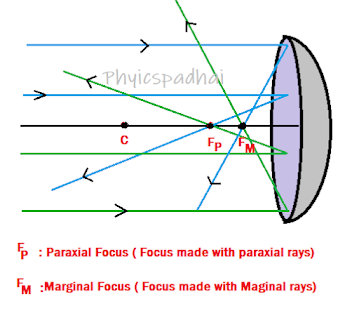Spherical Aberration
- Till now, our study was limited to the mirror of a very small aperture. If we consider a spherical mirror having a Large aperture, then the assumption that light parallel to the principal axis meets at a focus does not hold good.
- The relation (F = R/2 ) giving a single point focus is not followed and the image does not converge at a single point which leads to a distorted image.
- This phenomenon is called spherical aberration.
- This is due to the spherical shape of the mirror, hence called spherical aberration.
- The ray very close to the principal axis is called paraxial rays.
- The ray far away or at the edge of the mirror is called s marginal Rays.
Remedies for Spherical Aberration:
- It can be reduced by using a mirror of a very small aperture.
- It can be completely eliminated by using a parabolic mirror
Our Whatsapp Group: https://chat.whatsapp.com/GhFEWV1voyNC9JZAXfWSCc Join for more interesting physics animation videos and content.
│<<<Image formed in Concave mirror│ │Refraction>>>│
Related Topics: Introduction to optics Laws of reflection Sign Convention Reflection from plane surface Spherical Mirror Image formed in Concave mirror Spherical Abberation Refraction Refractive Index Refraction from plane surface Lenses Refraction from Curved surface Lens makers Equation Dispersion Of Light Prism Formula









No comments:
Post a Comment